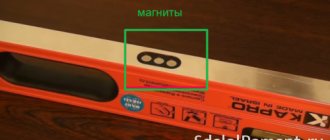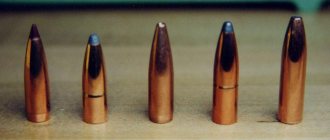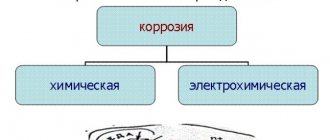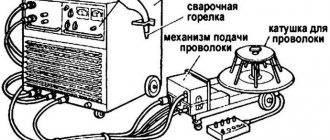Paramagnets and ferromagnets
Let's consider the option when each atom of a substance has its own magnetic field. These fields are multidirectional and compensate each other. If you place a magnet next to such a substance, the fields will be oriented in one direction. The substance will have a magnetic field, a positive and a negative pole. Then the substance will be attracted to the magnet and can itself become magnetized, that is, it will attract other metal objects. For example, you can magnetize steel clips at home. Each one will have a negative and a positive pole, and you can even hang a whole chain of paper clips on a magnet. Such substances are called paramagnetic.
Scientific point of view
To determine which metals are not magnetic, you need to find out how all metals in general can relate to magnets and a magnetic field. With respect to the applied magnetic field, all substances are divided into diamagnetic, paramagnetic and ferromagnetic.
You may be interested in: Gram staining technique: preparation, implementation, evaluation of the result
Each atom consists of a positively charged nucleus and negatively charged electrons. They move continuously, which creates a magnetic field. The magnetic fields of electrons in one atom can enhance or cancel each other, depending on the direction of their movement. Moreover, the following can be compensated:
- Magnetic moments caused by the movement of electrons relative to the nucleus are orbital.
- Magnetic moments caused by the rotation of electrons around their axis are spin moments.
If all magnetic moments are equal to zero, the substance is classified as diamagnetic. If only spin moments are compensated - to paramagnets. If the fields are not compensated, use ferromagnets.
Calculate the magnitude of the magnetic force
The quantitative value of magnetic force is useful to know when working with magnets, for example, to determine the force (in newtons) that acts on a charged particle moving in a magnetic field.
The fact is that this force is proportional to both the magnitude of the charge and the magnitude of the magnetic induction. In addition, this force is proportional to the velocity component perpendicular to the magnetic induction vector. In other words, no force acts on a charge moving along the direction of magnetic induction (or, as they also say, along the magnetic field). And a charge moving at right angles to the magnetic field experiences the maximum force. Bringing this information together, the meaning of the following formula becomes clear for the magnitude of the force that acts from the magnetic field \( \mathbf{B} \) on a charge \( q \) moving with a speed \( \mathbf{v} \ ) at an angle \( \theta \) between the vectors \( \mathbf{v} \) and \( \mathbf{B} \):
In fact, in physics it is not the strength of a magnetic field that is determined through magnetic induction, but magnetic induction through the force with which it acts on a positive test charge, that is:
In the SI system (see Chapter 2), the unit of magnetic induction is the tesla (T). And in the GHS system (see also Chapter 2), such a unit is the Gauss (Gs). They are related to each other as follows: 1 G = 10-4 T.
Let's consider an electron in a magnetic field with an induction of 12 Tc (a huge value, considering that the induction of the Earth's magnetic field on its surface is approximately equal to 0.6 gauss, or 6.0 10-5 Tc). What force acts on the electron if it travels at a speed of 1.0 106 m/s in a direction perpendicular to the field? The magnitude of this force is expressed by the formula:
and all we have to do is substitute numbers into it:
The force acting on this electron is 1.92·10-12 N and does not look that big. However, it should be recalled that the electron has a too small mass of 9.11·10-31 kg. What will be the acceleration of this electron? Using the well-known formula of Newton’s second law (according to which the acceleration of an object is equal to the ratio of the force and mass acting on it), we obtain:
The result is a simply colossal value even for an electron, approximately equal to 215,000,000,000,000,000 \( g \), where \( g \) is the acceleration of free fall in the gravitational field on the Earth’s surface. On the other hand, if this electron were moving along a magnetic field, then no magnetic forces would act on it.
Orbital movement: charged particles in magnetic fields
A positive charge placed in the electric field of a parallel-plate capacitor (see Chapter 17) will move in the direction opposite to the direction of the field lines. The fact is that these lines come out of charges that are located on the positive plate, which repels the positive charge. However, when it comes to a magnetic field, everything is different here due to the fact that the magnetic field does not act on charges moving in parallel. In Fig. Figure 18.4 shows the path of a positive charge moving perpendicular to the magnetic field lines.
Did you notice the crosses in the picture? This is how it is customary in physics to denote the direction of magnetic field lines when they are directed away from the reader and enter the page along a perpendicular to it. It is understood that the crosses indicate the ends of imaginary vector arrows, which are exactly what they look like from behind. A positive charge moves in a straight line until it enters a magnetic field and begins to be subjected to force. As can be verified using the right (or left) hand rule, the magnetic field strength will be directed upward and, as shown in the figure, will make the path of the charged particle curved.
Magnetic fields don't do work...
As you know, a force acts on a charged particle in a magnetic field, but what work does the magnetic field do on this charge? Yes, good question.
When a charge moves in an electric field, it does work with it, due to which the concept of potential difference is introduced, i.e. the work done on the charge \( W \), divided by the value of this charge \( q \) (in other words, the work done on one coulomb):
What work does the magnetic field do on the charge? It can be calculated this way (as shown in Chapter 6):
where \( s \) is the distance. So...Have you noticed yet? Here \( \theta \) is the angle between the force and the direction along which it acts. But, according to the right-hand rule, for charges in a magnetic field the angle \( \theta \) is always equal to 90°, and cos90° = 0, i.e. the work done by the magnetic field on a moving charge is zero.
This feature is another important difference between electric and magnetic fields. An electric field always does work on a moving charge, but a magnetic field never does, and therefore it cannot change its kinetic energy.
...but affect moving charged particles
Despite the reluctance to deal with a moving charged particle, a magnetic field can change the direction of that particle's motion (which it does). In fact, if the direction of motion of a charge can be freely changed, then the magnetic field will always do this, since the force acting on the charge is always directed perpendicular to its movement.
Do you remember any other type of motion whose direction is always perpendicular to the applied force? Well, of course, this is the rotational motion that was discussed in Chapter 7. This movement of the charge can be seen in Fig. 18.4 as it passes through a magnetic field. Since magnetic fields act on a charge perpendicular to the direction of its movement, the movement of charges that do not go beyond the magnetic field will be rotational.
Look at fig. 18.5, where the positive charge moves to the left in the magnetic field. The margin \( \mathbf{B} \) is directed upward from the plane of the page towards the reader. How is this known? See all those dots inside the circles? Just as a cross denotes a vector arrow directed away from the reader, so a dot inside a circle denotes an arrow directed towards the reader. Therefore, now the field \( \mathbf{B} \) is directed upward, i.e. from page to reader.
So the field \( \mathbf{B} \) is directed away from the page towards the reader, and the positive charge moves to the left. Using the right (or left) hand rule, we can say that the resulting force is directed upward (more about the right hand rule earlier in this chapter). Under the influence of an upward force, the charge also moves upward. But since, due to the action of the magnetic field, the force is always perpendicular to the direction of movement, it also changes its direction. Here is the formula for the magnitude of force:
Since in this case the velocity vector \( \mathbf{v} \) is perpendicular to the magnetic induction vector \( \mathbf{B} \), then \( \theta \) = 90°, or \( \sin\ !\theta \) = 1, which means that:
Since the force is always perpendicular to the direction of motion, circular motion thus arises. In other words, it is nothing more than the centripetal force needed to provide rotational motion (Chapter 7).
where \( m \) is the mass of the particle, and \( r \) is the radius of the orbit of rotational motion. Thus we get:
From here it is easy to find the radius of the orbit of rotational motion:
Thus, it is possible to calculate the radius of the orbit of rotational motion of a charge \( q \) with mass \( m \) moving at speed \( \mathbf{v} \) in a magnetic field with induction \( \mathbf{ B}\). The stronger the magnetic induction, the smaller the radius. And the faster the charge moves and the greater its mass, the greater the radius.
We act on a moving charge
Magnets influence electric current: they create a force that acts on electric charges moving in it. However, electric charges must move, otherwise there will be no force acting on them from the magnetic field.
How this happens is shown in Fig. 18.3, where a charge moving at a speed \( \mathbf{v} \) through a magnetic field, shown in the figure by the magnetic induction vector \( \mathbf{B} \), is acted upon by a force from this magnetic field. (You can learn more about vectors in Chapter 4.)
(The magnetic field at a point in space is determined by such a vector quantity as magnetic induction \( \mathbf{B} \) at this point. It plays the same role in magnetism as the electric field strength \( \mathbf{E} \) at electrostatics. The direction of the field at a point is the direction of the magnetic induction vector in it, indicated by the compass needle at this point. Magnetic field lines are lines drawn so that the tangents to them at each point indicate the direction of magnetic induction at this point. - Note. ed.)
A magnetic field creates a force that acts on a moving charge. Where is this force directed? The answer can be seen in Fig. 18.3, as well as the right-hand rule, with which you can answer this question yourself.
The right hand rule applies to moving charges; Two options are listed below - choose the one that seems easier to you.
Option 1. If all the fingers of the right hand, except the thumb, are placed along the magnetic field (in Fig. 18.3 it is shown by the vector \( \mathbf{B} \)), and the thumb of this hand is placed in the direction of the speed \( \mathbf{v } \) charge, then the force acting on the positive charge must come out of the palm. If the charge is negative, then the force is directed in the opposite direction.
Option 2. Place the fingers of your right hand, except the thumb, in the direction of the velocity v of the charge, and then bring them closer to the palm, turning them at the minimum possible angle (less than 180°) until they point in the direction of the magnetic field \( \mathbf {B}\). The right thumb will then point in the direction of the force.
These rules may remind you of the moment of force (sometimes called torque) (Chapter 10). The fact is that the force vector comes out of the plane formed by the vectors \( \mathbf{v} \) and \( \mathbf{B} \).
(In Russian-language literature, it is customary to use the left-hand rule: if you place your left hand on the conductor so that four fingers indicate the direction of the current, and the magnetic induction lines enter the palm, then the bent thumb will indicate the direction of the force acting on the conductor. - Ed. note. )
Using any of these rules, you can find the direction in which the force acts on a moving charge. But how big is this power?










